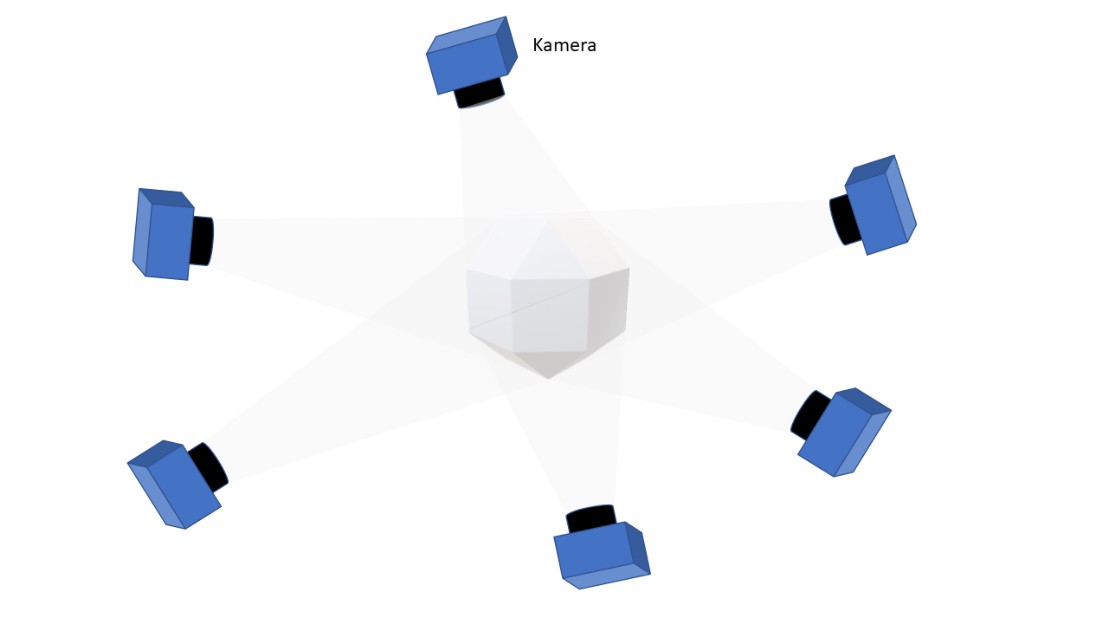3D - Scaning / 3D Metrology
Just as the classic paper scan is, so to speak, the downside of paper printing, this relationship can also be transferred to the three-dimensional world.
3D scanning makes it possible to digitize three-dimensional objects using optical methods and thus create a virtual 3D model of this object, which can either be processed further or used for further replications.
In the field of 3D scanning, there are two basic methods - the so-called "structured light scanning" and photogrammetry.
Structured light scanning:
With "structured light scanning", individual lines are projected onto the object to be scanned using a projector or laser. These lines are optically "deformed" according to the geometry and contour of the object. A camera captures these deformations and corresponding software calculates individual points within a spatial coordinate system. Using a software-based algorithm, these points are connected by connecting lines to form individual, triangular areas. This creates a grid that represents the scanned object.
The special strengths of this method are mainly the high accuracy and speed, as well as the scale calculation of the object during scanning. This means that the size of the scanned, three-dimensional model already corresponds to that of the original.
In addition, geometrically simple objects can also be detected by applying small reflective stickers, so-called "markers" or "targets" to the object. The scanner can orientate itself on these similar to a starry sky and thus already clearly line up the scanned geometry. As a result, comparatively large and bulky objects can also be recorded using several individual scans.
The disadvantage of this method, as with all optical measuring methods, is that the accuracy and the general detectability are very much dependent on the optical properties of the object to be scanned.
For example, glossy surfaces must first be pre-treated with a washable or self-evaporating matting spray.

Photogrammetry:
So-called photogrammetry represents a fundamentally different approach to determining the virtual, three-dimensional models. A digital camera is used to create a large number of images of the object to be scanned from as many viewing angles as possible. These images are recorded using special software and processed based on various characteristics.
The advantage of this method lies primarily in the relatively simple possibility of capturing the object, which means that organic forms such as sculptures can also be captured very well. In addition, the later 3D model can be calculated with colored textures, which enables a very realistic display.
Here, too, the disadvantage of this method lies in the limitation to non-glossy surfaces. In addition, due to the specific process, only geometrically complex objects can be scanned. In addition, when calculating the geometry from two-dimensional images, the quality of the 3D model is very much dependent on the quality of the images. Furthermore, the scale of the generated 3D model is initially not defined due to the missing reference point.



